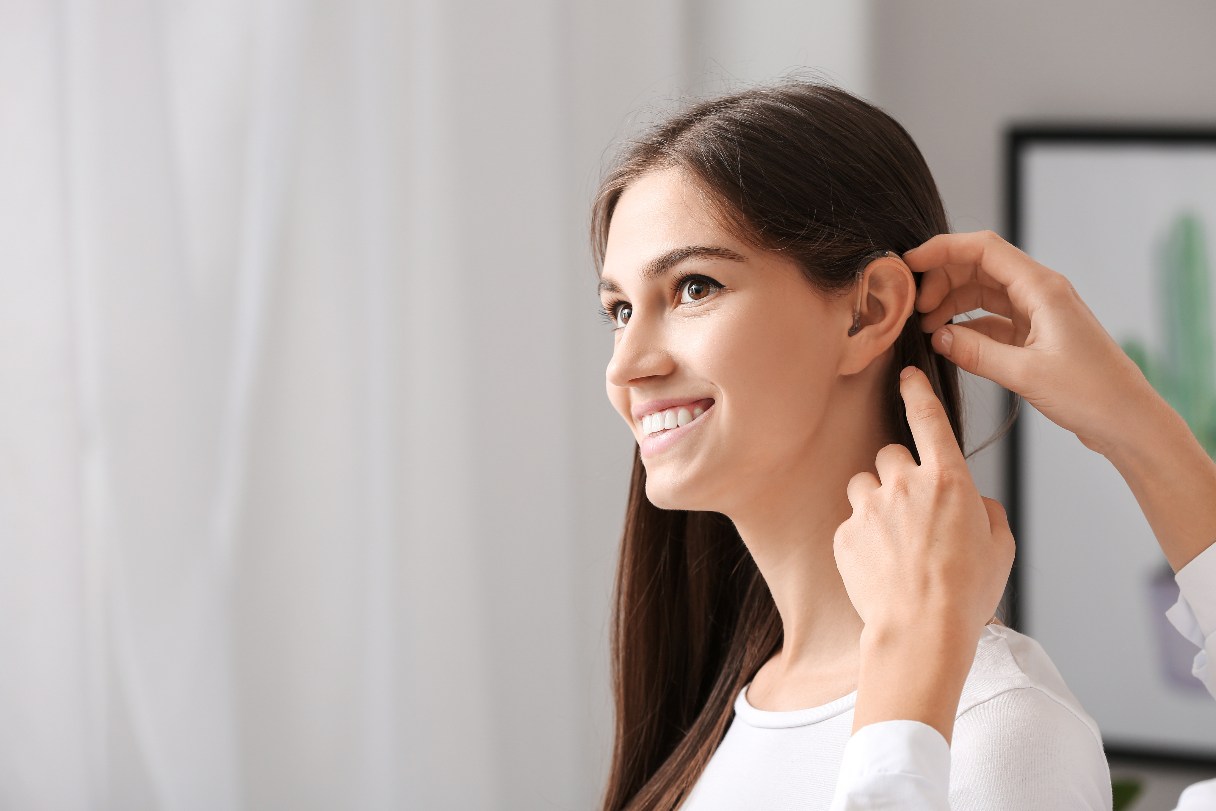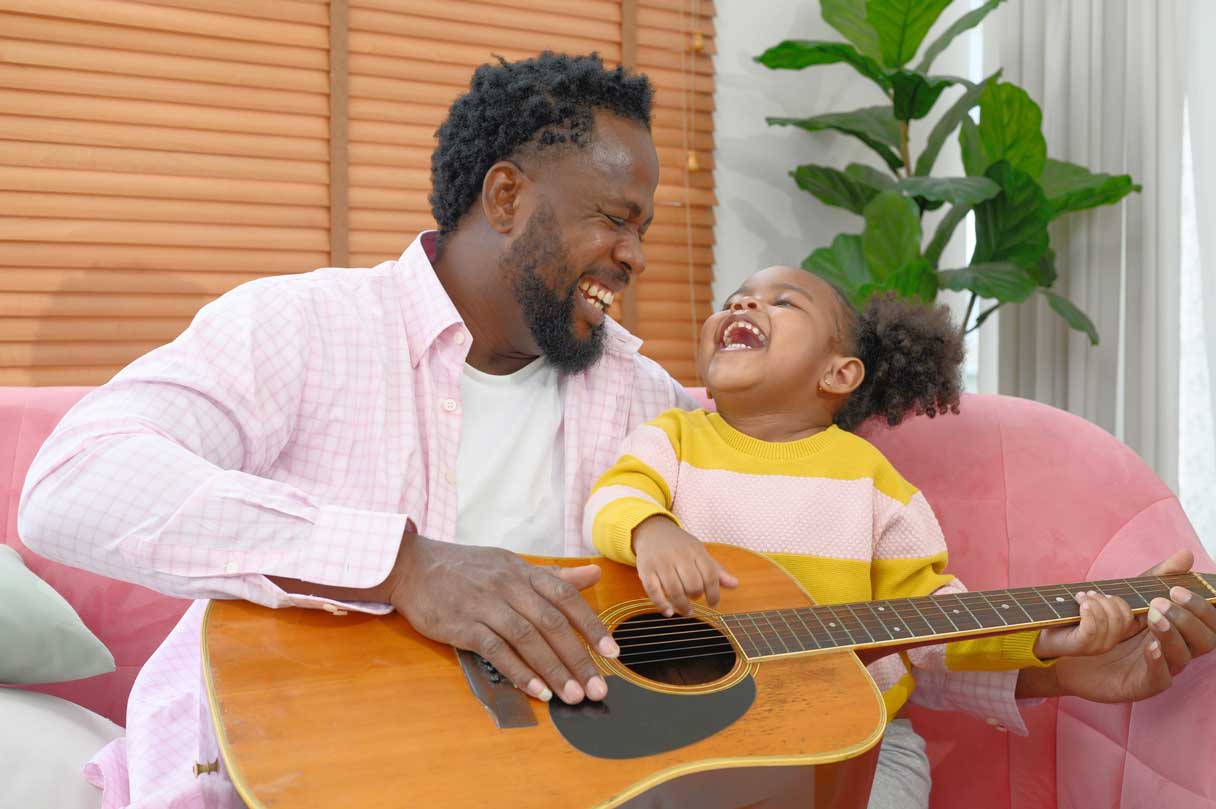Myths About Hearing Loss and How Audiologists Can Debunk Them
Audiologists play a key role in educating young adults about hearing loss. Explore common misconceptions and how you can help dispel these myths.
By Leslie Lang
Digital Writer
Posted May 30, 2025 - 7 min read

Did you know that in the 2024 Hearing Health & Loss Prevention Study conducted by Synchrony, 86% of people surveyed who use hearing assistance devices say they wish they’d gotten them sooner?1 This impactful statistic underscores the need to educate patients about today's hearing loss solutions — and how well they can work. It's especially important to engage younger people, many of whom don't realize that audiology should be a routine part of their healthcare.1
Too often, young adults think of hearing loss as a “later in life issue.”1 In reality, many experience hearing loss earlier than expected or fall for common myths about hearing health.1 Hearing health professionals have a unique opportunity to guide the next generation toward better hearing awareness and timely evaluation and care.
Let's explore some of the most common myths and how you can help dispel them to build a culture of proactive hearing care.
"Only Older People Have to Worry About Hearing Loss"
Many younger people may not realize that it's not only older people who are affected by hearing problems. You can explain that 40% of young adults under 30 have some level of hearing loss. In fact, 62% of Gen Z individuals report having experienced a symptom of hearing loss in the past six months.1
Half of those aged 12 to 35 are susceptible to developing hearing loss because of exposure to loud sounds through earbuds or headphones.2
"Loud Music Can’t Hurt My Hearing"
Many young people may not know that loud music can damage their hearing. You're in a perfect position to explain the facts: The louder the sound, the more damage it can do, and the faster. You can help them understand that sounds at 85 decibels (dB) or higher, which are equivalent to the noise a food blender makes or the volume of a movie theater’s soundtrack, could be likely to damage hearing.3
Although the World Health Organization says devices should be set to a maximum of 80 decibels to protect hearing, headphones or earbuds have settings that allow them to set the volume higher, typically between 75 and 105 dB.4
Safe listening for children and teen takes three factors into account: decibel level, time and distance. Explain to your patients that they can protect their ears by keeping the volume at a safe level, moving away from an external source, such as an amp at a loud concert, and limiting how long they listen.5
Another tip: Noise-canceling headphones or earbuds can help because they cancel out background noise around the listener, making it less likely they’ll turn up the volume on their music to hear over it.5
"I Don’t Need a Hearing Test if I Don’t Have Symptoms of Hearing Loss"
Patients need to learn that testing their hearing is important, whether or not they are experiencing hearing loss symptoms. Even a slight loss of hearing can greatly impact a person’s lifestyle, especially their cognitive abilities, interactions with others and work life.6 Obtaining and using hearing aids when needed can help with social interaction, communication, independence and overall outlook.7
"It Doesn’t Matter if I Treat Hearing Loss"
Many people don’t realize how important it is to make sure they treat their hearing loss. You can explain that untreated hearing loss can lead to falls, depression, social isolation or dementia. A theory is that the extra cognitive load hearing loss puts on the brain takes away from resources the brain would use in other ways, such as short-term memory. Research shows that treating hearing loss can prevent or even reverse some of these conditions.8
"Ringing in My Ears Isn’t a Big Deal"
Tinnitus is often associated with some degree of hearing loss.9 Younger patients may have heard that hearing aids don’t help with tinnitus and may not know that some newer models have a feature that can help.
Hearing health professionals can offer helpful hearing aids that have amplification of outside noises to make tinnitus less noticeable, or provide other sound or behavior therapies or medications.9
"Getting Hearing Aids Will Be Embarrassing"
Sixty percent of people who wear hearing devices report being embarrassed about it and would rather not wear them.1 As a hearing healthcare professional, patient engagement is key. You’re in a position to debunk hearing aid myths and defuse hearing aid stigma, such as that they are always bulky and noticeable.
While some older adults may wear older, more noticeable models, newer hearing aid technologies have moved beyond that. Educate your patients that they have options, including sleek behind-the-ear models that come in colors that blend in with skin tones and smaller "invisible" hearing aids that fit inside the ear and are hard to see.10
"Hearing Aids Are for Old People"
You’ll likely get younger patients’ attention if you tell them that two-thirds of people with hearing loss are younger than 65.8 Some children have hearing loss caused by genetics. Teens and young adults are experiencing hearing loss at much higher levels than in the past because of loud sound levels.2
Other Common Hearing Loss Myths
Some other misconceptions about hearing loss are often believed by patients of all ages. Here are some ways you can address them.
"Hearing loss when older is inevitable and cannot be prevented"
We can’t control some causes of hearing loss, such as genetics. Diabetes can sometimes lead to hearing impairment. But so can smoking, which is something you can educate your patients about.8
Healthcare professionals and audiologists can also talk with patients of every age about noise exposure being the largest preventable cause of hearing loss.8
"Hearing aids and cochlear implants are too expensive"
Hearing aids can be costly because of their advanced technologies, research and development and customizations. Digital hearing aids range from $1,650 to $4,155 per pair in the United States, with an average cost* of $2,114. Analog hearing aids run $1,061 to $2,252 per pair in the U.S., and their average cost* is $1,354.11
Cochlear implants, for people with moderate to profound hearing loss, may cost more. Implants, including the related surgery and other costs, range from $39,475 to $98,195 in the U.S., averaging $51,072 without insurance.11 While most major insurance plans, Medicare and Medicaid may cover cochlear implants, there can still be costly out-of-pocket costs, but there are options for paying for hearing loss treatment.12
Paying for Hearing Aids and Cochlear Implants
When determining how to pay for their hearing assistance, your patients should start by checking with their health insurance plan. Many policies cover a hearing exam with a referral, and some also cover a portion of hearing aid costs and related services.12
More than 90% of private employer insurance plans and managed care organizations cover cochlear implant surgeries and related costs.13
Yet, for both types of hearing assistance, there are usually costs left for the individual to pay. The average out-of-pocket cost for hearing devices is more than $400. There are also costs for having one’s hearing evaluated. Seventy-seven percent of audiologists say that insurance, cost and access issues are why adults don’t have their hearing evaluated.1
Forty-five percent of adults who have never had their hearing checked say they would be motivated to do so if it were free. Thirty-four percent of hearing-impaired individuals without hearing devices say they won’t get one even if their hearing gets worse because of the cost.1
Fifty-eight percent of consumers with hearing loss who do not use a hearing aid like the idea of being able to finance their costs.1 One patient financing option is the CareCredit credit card, which can help them pay for hearing care, including hearing tests, screenings, devices, fittings, implants, tinnitus treatment and more.**
Helping Young Adults Understand Hearing Care
If you don’t often see young people directly in your audiology practice, you may see their family and friends and can share information with them — and encourage them to discuss the impact that hearing loss is having on young adults’ lives.
Addressing the misconceptions young patients have about hearing loss may help them understand why it's important to treat it. As a hearing healthcare professional, you are in a position to let them know about significant advancements in hearing aid technologies and open up discussions that help more young people preserve their hearing and treat any hearing loss they may already have.
A Patient Financing Solution for Your Hearing Care Practice
If you want to help your patients manage the cost of your practice's exams, procedures and products, consider offering CareCredit as a financing solution. CareCredit allows cardholders to pay for things like hearing care services and devices over time while helping to enhance the payments process for your practice.
When you accept CareCredit, patients can see if they prequalify with no impact to their credit score, and those who apply, if approved, can take advantage of special financing on qualifying purchases.** Additionally, you will be paid directly within two business days.
Learn more about the CareCredit credit card as a patient financing solution for your hearing care practice or start the provider enrollment process by filling out this form.
Author Bio
Leslie Lang is a writer with more than 20 years of experience covering health and wellness, banking and finance and technology. She has written for leading publications and organizations, including GoodRx.com, Healthgrades.com, Google, Adobe, Microsoft and more.
Healthcare payment and financing solution
The CareCredit health and wellness credit card helps improve the payment experience for patients and clients, and your financial performance.
Get StartedReady to help more patients and clients get the care they want and need?
Get StartedReady to help more patients and clients get the care they want and need?
Get Started*Actual cost may vary based on geography, provider and other variables. Cost information is based on research in the 50 United States and the District of Columbia, which was conducted by ASQ360° in 2024 on behalf of Synchrony’s CareCredit.
**Subject to credit approval.
The information, opinions and recommendations expressed in the article are for informational purposes only. Information has been obtained from sources generally believed to be reliable. However, because of the possibility of human or mechanical error by our sources, or any other, Synchrony and any of its affiliates, including CareCredit, (collectively, “Synchrony”) does not provide any warranty as to the accuracy, adequacy, or completeness of any information for its intended purpose or any results obtained from the use of such information. The data presented in the article was current as of the time of writing. Please consult with your individual advisors with respect to any information presented.
© 2025 Synchrony Bank.
Sources:
1 Hearing Health and Loss Prevention Study, Synchrony. February 2024. (CareCredit is a Synchrony solution.)
2 “Noise exposure in young children and teens,” Rady Children's Hospital-San Diego. Accessed May 8, 2025. Retrieved from: https://www.rchsd.org/programs-services/audiology-hearing/noise-exposure-in-young-children-and-teens/
3 “Loud noise dangers,” American Speech-Language-Hearing Association. Accessed May 8, 2025. Retrieved from: https://www.asha.org/public/hearing/loud-noise-daoviengers
4 “Make listening safe,” World Health Organization. 2023. Retrieved from: https://cdn.who.int/media/docs/default-source/documents/health-topics/deafness-and-hearing-loss/mls-brochure-english-2021.pdf?sfvrsn=bf19b448_5
5 “Earbuds and the effects on our youth,” Salem Audiology Clinic. June 11, 2024. Retrieved from: https://salemaudiologyclinic.com/earbuds-and-the-affects-on-our-youth/
6 “Hearing loss and cognitive decline: What research shows,” Advanced Hearing Center. March 26, 2024. Retrieved from: https://advancedhearingctr.com/hearing-loss-and-cognitive-decline-what-research-shows/
7 “The impact of hearing aid use on overall health and well-being,” Oklahoma Hearing Center. January 20, 2025. Retrieved from: https://okhc.org/the-impact-of-hearing-aid-use-on-overall-health-and-well-being/
8 “Common myths and helpful tips,” Hearing Health Foundation. Accessed May 8, 2025. Retrieved from: https://hearinghealthfoundation.org/common-myths
9 “Tinnitus,” National Institute on Deafness and Other Communication Disorders. Updated May 1, 2023. Retrieved from: https://www.nidcd.nih.gov/health/tinnitus
10 “10 hearing aid myths we're busting,” Apex Rhinology and Cosmetic Surgery Center. September 12, 2023. Retrieved from: https://www.apexentcenter.com/blog/busting-10-hearing-aid-myths/
11 2024 Synchrony Average Procedural Cost Study for Cosmetic, Dental, Veterinary, Vision and Other Practices Across the United States, conducted by ASQ360° Market Research, Cost Tables.
12 “Financial options for hearing loss treatment,” Hearing Loss Association of America. Accessed May 8, 2025. Retrieved from: https://www.hearingloss.org/find-help/financial-assistance/
13 Sorkin, Donna. “Cochlear implant insurance,” American Cochlear Implant Alliance. Accessed May 8, 2025. Retrieved from: https://www.acialliance.org/page/HealthIns




